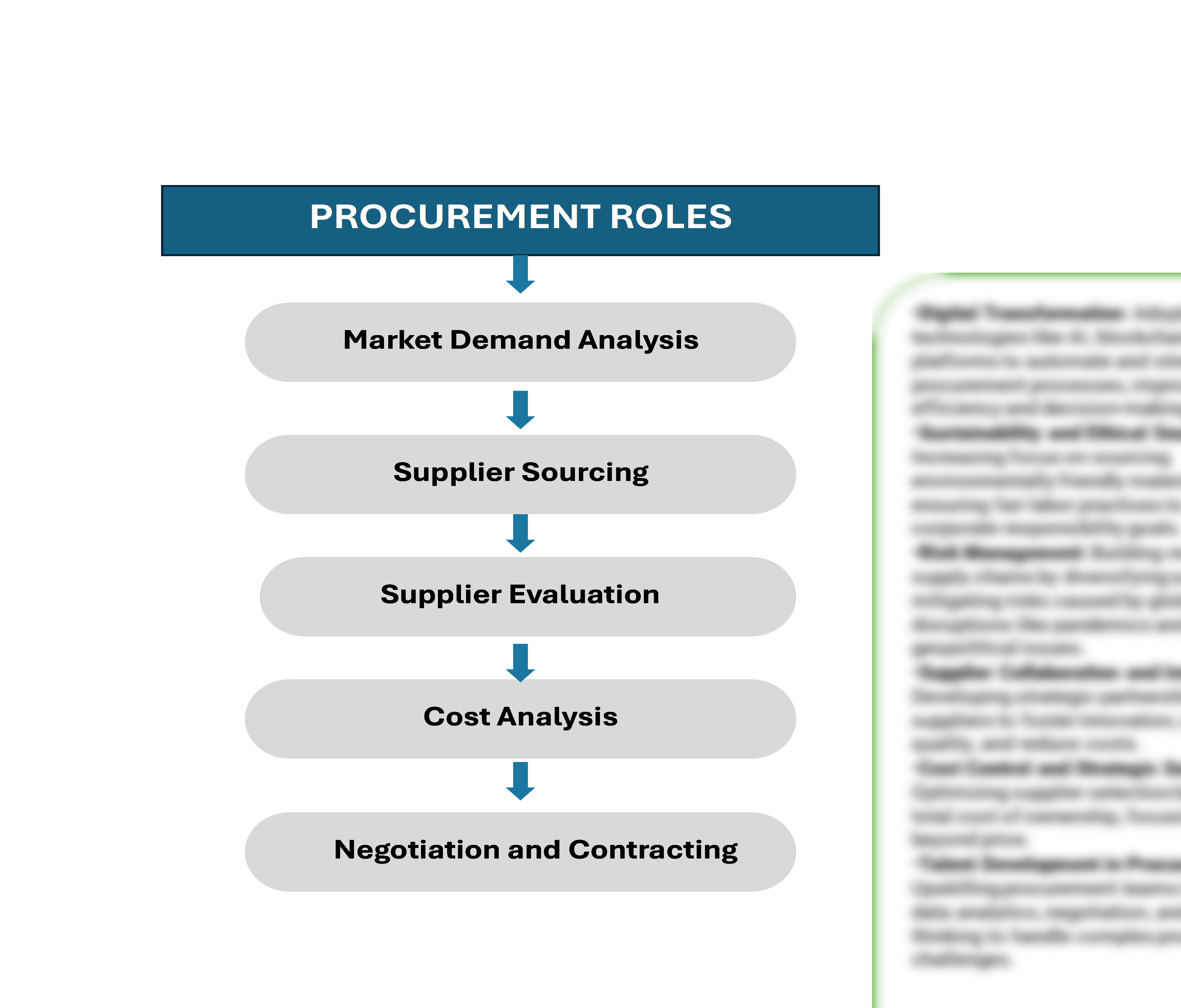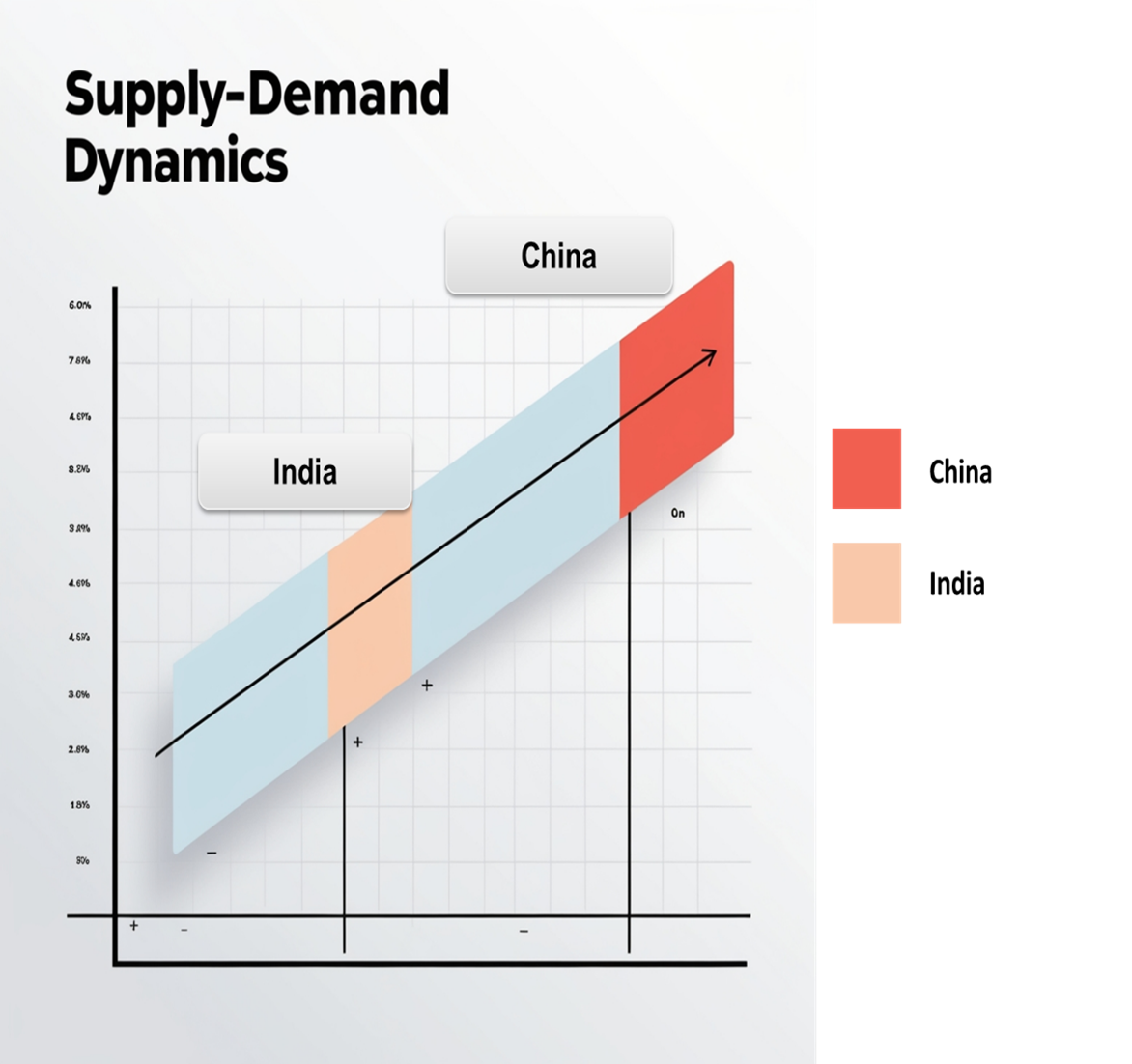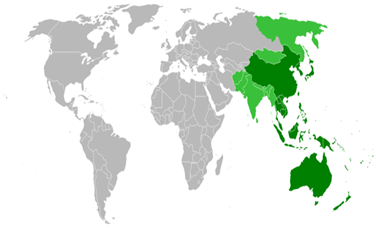The global acetone market is witnessing significant growth, driven by increasing demand from various end-use industries such as pharmaceuticals, cosmetics, and automotive. The rise in production of methacrylate and bisphenol A is also contributing to market expansion. With substantial investments in manufacturing and technological advancements, acetone is being utilized as a key solvent in the production of plastics, paints, and coatings. This report provides a comprehensive analysis of procurement trends in the acetone market, emphasizing cost optimization strategies, supplier relationship management, and the impact of regulatory changes on sourcing practices. Key trends include the use of eco-friendly production methods and the adoption of digital procurement tools to enhance supply chain visibility and improve sourcing accuracy. Additionally, we address future procurement challenges and emphasize the importance of digital procurement tools in accurately forecasting market needs to keep clients ahead in this dynamic landscape. Strategic sourcing and procurement management play a crucial role in streamlining the procurement process for acetone development. As competition intensifies, companies are leveraging market intelligence solutions and procure analytics to optimize their supply chain management systems. The outlook for the acetone market is robust, with several key projections and trends anticipated to drive growth through 2032: Market Size: The global acetone market is projected to reach approximately USD 7.5 billion by 2032, with a compound annual growth rate (CAGR) of around 5% from 2024 to 2032. Growth rate: 5 % Sector Contributions: Key sectors contributing to growth include: Pharmaceuticals: Increased use of acetone as a solvent in drug formulation is driving demand. Cosmetics & Personal Care: Acetone is widely used in nail polish removers and other cosmetic products, sustaining its market relevance. Technological Transformation and Innovations: Advances in chemical manufacturing, including the development of more efficient production processes and eco-friendly solvents, are enhancing acetone production and reducing environmental impact. In addition, supplier performance management and vendor performance assessment are becoming critical for companies in this competitive landscape. These innovations are helping companies optimize their supply chains, improve product quality, and meet increasingly stringent environmental regulations, while also driving cost-effectiveness in the production and distribution of acetone across various industries. Regional Insights: North America holds a significant share of the market; however, Asia-Pacific is expected to experience the highest growth rate due to rising industrial activities and increasing production capacities. Key Trends and Sustainability Outlook Sustainable Production: The shift towards sustainable practices is prompting manufacturers to explore greener alternatives for acetone production and applications. Regulatory Compliance: Increasing regulations regarding chemical safety are influencing procurement strategies and sourcing practices across industries. Technological Advancements: Innovations in production technologies are optimizing acetone synthesis, thereby enhancing yield and reducing costs. Growth Drivers Rising Demand from End-Use Industries: The increasing demand for acetone in the production of adhesives, paints, and coatings is fueling market growth. Expansion of Chemical Manufacturing: The expansion of the chemical manufacturing sector in emerging economies is driving acetone consumption. Supply Chain Dynamics: Ongoing shifts in global supply chains are leading to more localized production of acetone, enhancing supply chain resilience and efficiency. Research and Development Investments: Increased investment in R&D for advanced applications of acetone in emerging sectors is fostering innovation and market growth. Cost Considerations: The competitive pricing of acetone compared to alternative solvents is making it an attractive option for manufacturers. Overview of Market Intelligence Services for the Acetone Market Recent analyses reveal that the acetone market is experiencing notable price fluctuations due to changes in raw material costs and demand from various industries, particularly pharmaceuticals and cosmetics. Market reports provide detailed cost breakdowns and projections for both raw materials and production processes, enabling stakeholders to forecast pricing trends and identify potential cost-saving strategies. By leveraging these insights, companies can enhance their procurement strategies, manage expenses effectively, and make informed decisions regarding sourcing and investment in acetone. With real-time data and industry-specific forecasts, stakeholders are better positioned to optimize their operations in the acetone market, ensuring profitability while adapting to shifting market dynamics. Procurement Intelligence for Acetone market : Category Management and Strategic Sourcing To stay ahead in the acetone market, companies are optimizing procurement strategies, leveraging spend analysis solutions for vendor spend analysis, and enhancing supply chain efficiency through supply market intelligence. Procurement category management and strategic sourcing are becoming vital in achieving cost-effective procurement and ensuring the timely availability of essential raw materials, such as propylene, for acetone production. These strategies help companies manage market volatility, reduce costs, and enhance the efficiency of acetone supply chains, which are crucial for industries such as pharmaceuticals, chemicals, and plastics. Acetone Market Pricing Outlook: Spend analysis The acetone market is experiencing dynamic pricing trends influenced by raw material costs, production capacities, and demand from industries such as pharmaceuticals and cosmetics. The line chart illustrating the projected pricing outlook for the acetone market from 2024 to 2032. This chart reflects steady growth in market valuation, reaching approximately $XX billion by 2032, with an annual CAGR driven by demand and production factors Comprehensive Price Forecast: The market is expected to see a moderate upward price trend through 2032 due to fluctuating raw material costs (notably propylene) and increasing production costs linked to energy volatility. The rise in bio-based acetone adoption is also impacting pricing. Procurement Strategies: To manage pricing volatility, stakeholders should consider: Long-term Supplier Agreements: Lock in prices with suppliers to mitigate fluctuations. Diversified Sourcing: Use multiple suppliers to enhance negotiation power. Efficient Inventory Management: Optimize stock levels to reduce costs. Cost Breakdown for the Acetone market: Total cost of ownership TCO and Cost saving opportunities Raw Materials (60%) Description: Includes costs for key raw materials like propylene, which is primarily used in acetone production. Trends: Fluctuating prices of propylene due to supply chain disruptions and energy price volatility are driving raw material costs. The shift towards bio-based acetone production is also influencing pricing dynamics, with sustainable options often priced at a premium. Production Equipment (XX%) Description: XX Trends: XX Transportation & Logistics (XX%) Description: XX Trends: XX Labor & Operational Costs (XX%) Description: XX Trends: XX Cost-Saving Opportunities in the Acetone Market: Negotiation Lever and Purchasing Negotiation Strategies Optimizing procurement strategies in the acetone market offers substantial cost-saving opportunities. Collaborative purchasing enables companies to leverage bulk buying power for raw materials like propylene, leading to better pricing from suppliers. Additionally, investing in efficient production processes, such as advanced distillation technologies, can improve yield and reduce operational costs. Utilizing digital tools for supply chain management enhances visibility and minimizes lead times, further lowering holding costs. Establishing strategic supplier relationships allows for favourable terms, such as volume discounts and flexible payment options, improving cash flow management. Collectively, these strategies not only reduce costs but also promote sustainability, enhancing overall competitiveness in the acetone market. Supply and Demand Overview of the Acetone Market: Demand-Supply Dynamics and Buyer Intelligence for Effective Supplier Relationship Management (SRM) The acetone market is experiencing steady growth driven by increasing demand from end-use industries such as chemicals, pharmaceuticals, automotive, and consumer goods. Demand is particularly high due to the essential role acetone plays as a solvent in various industrial applications, including paint thinners, adhesives, and coatings. This demand is further supported by the rising consumption of plastics and synthetic fibers, as well as advancements in chemical production technologies. Collaborations between manufacturers, suppliers, and industry players are crucial in ensuring the steady availability and cost-effectiveness of acetone supply, making SRM a key focus for businesses seeking to manage procurement and supplier relationships effectively. Demand Factors: Industrial Growth in Key Sectors: Expanding pharmaceutical, automotive, and electronics industries drive significant demand for acetone, used in solvents, coatings, and plastic production. Rising Consumer Demand for Cosmetics: The cosmetics and personal care industry increasingly uses acetone in products, boosting demand as consumer markets grow. Increased Environmental Regulations: Higher demand for eco-friendly and sustainable acetone solutions aligns with stricter global environmental standards. Technological Advancements: Innovations in the chemical sector, including bio-based acetone production, are expected to meet growing demands for sustainable solutions. Supply Factors: Expansion of Production Capacities: Leading producers are increasing acetone output to match rising demand, particularly in Asia and North America, to stabilize global supply. Shift Toward Bio-based Alternatives: Producers are diversifying supply by incorporating bio-based acetone to meet environmental standards and market demand for sustainable options. Logistical and Supply Chain Optimizations: Enhanced logistics and local sourcing initiatives ensure stable acetone supply, reducing dependence on imports and lowering transportation costs. Market Competition and Innovation: High competition among key acetone manufacturers fosters price efficiency and process innovations, improving product availability and market adaptability. Regional Demand-Supply Outlook: Acetone Market in North America The image shows growing demand for Acetone market in both India and China, with potential price increases and increased competition. North America: Key Player in the Acetone Market North America, particularly the United States and Canada, is a vital region in the global acetone market, characterized by: Diverse Industrial Applications: The acetone market is driven by demand from various sectors, including pharmaceuticals, cosmetics, and automotive, where acetone is used as a solvent and chemical intermediate. Robust Production Capacity: North America boasts significant production facilities, particularly in the U.S., which helps ensure a steady supply of acetone and meets regional demand effectively. Investment in Sustainability: Growing interest in bio-based acetone production is evident, with investments in sustainable processes and renewable feedstocks, aligning with global environmental goals. Technological Advancements: Innovations in production technologies are enhancing efficiency and reducing production costs, enabling manufacturers to remain competitive in the market. Regulatory Influence: North American regulations regarding chemical safety and environmental impact shape market practices, promoting safer and more sustainable acetone production methods. Asia Pacific remains a key hub Academic research innovation and growth Supplier Landscape: Supplier Negotiations and Strategies in the Acetone Market The supplier penetration in the acetone market is significant, with a growing number of global and regional players contributing to the production and distribution of acetone. These suppliers play a crucial role in shaping market dynamics, influencing pricing, innovation, and supply chain efficiency. The acetone market is highly competitive, with suppliers ranging from multinational chemical manufacturers to specialized regional producers focused on enhancing production capabilities and improving product quality. Currently, the supplier landscape is characterized by a mix of large, integrated chemical companies that dominate the market share, alongside emerging suppliers focused on optimizing production and distribution processes. However, some smaller and regional suppliers are expanding their footprint by offering competitive pricing and focusing on customer-specific needs, particularly in niche sectors. Some of the key suppliers in the acetone market include: LyondellBasell Industries BASF SE SABIC INEOS Phenol Shell Chemicals LG Chem Honeywell UOP Mitsubishi Chemical Corporation Reliance Industries Limited Key Developments: Procurement category significant development Key Developments Description Impact on Growth Trajectory Rising Demand in End-Use Industries Increasing use of acetone in pharmaceuticals, cosmetics, automotive, and electronics sectors. Drives market expansion and enhances revenue streams. Sustainable and Bio-Based Acetone Production Shift towards eco-friendly production methods, including bio-based acetone to meet environmental regulations. Enhances sustainability and appeals to eco-conscious buyers. Technological Advancements Adoption of advanced manufacturing technologies to improve efficiency and reduce production costs. Boosts production capabilities and lowers operational costs. Expansion of Production Capacities Major players expanding production facilities, particularly in Asia and North America. Stabilizes supply and meets rising global demand. Supply Chain Resilience Strengthening logistics and local sourcing to minimize supply disruptions. Increases supply reliability and cost stability. Globalization and Market Consolidation Mergers and acquisitions among key players to expand market presence and streamline operations. Enhances market reach and competitive positioning. Focus on R&D for New Applications Investment in R&D to develop new acetone applications, particularly in specialty chemicals and composites. Opens new growth avenues and diversifies usage. Metric Details Market Sizing The global acetone market is projected to grow from USD 7.3 billion in 2024 to USD 7.5 billion by 2032, with a CAGR of 5% during the forecast period (2024-2032). Acetone Demand Growth Rate Demand for acetone is rising, with a projected annual increase of 5%, driven by its applications in pharmaceuticals, solvents, and acrylics production. Top Applications in 2024 Key applications include methyl methacrylate (MMA) production, Bisphenol-A (BPA) manufacturing, and solvent usage across industrial and cosmetic sectors. Market Challenges Major challenges include fluctuating crude oil prices, regulatory restrictions on VOCs (volatile organic compounds), and environmental concerns related to acetone production. Key Suppliers Prominent suppliers include INEOS Phenol, Mitsui Chemicals, SABIC, Alivia, and Shell Chemicals, known for their robust acetone production and distribution networks. Key Regions Covered North America, Europe, Asia-Pacific, and Rest of the World, with high demand in the U.S., China, and Germany due to industrial applications and infrastructure development. Market Drivers and Trends Growth driven by increased demand in the pharmaceutical and coatings industries, advancements in sustainable production methods, and rising investments in Asia-Pacific markets. Sustainability Focus Emphasis on reducing environmental impacts with bio-based acetone production and adherence to stricter environmental regulations globally.Acetone Market Overview







Frequently Asked Questions (FAQ):
Our procurement intelligence services provide a detailed analysis of the global acetone supplier landscape. We identify key suppliers, offer spend analysis, supplier performance evaluations, and market intelligence to help source acetone efficiently and cost-effectively.
We assist in evaluating the Total Cost of Ownership (TCO) for acetone by analyzing procurement costs, transportation, storage, and handling expenses. This comprehensive cost breakdown helps you understand the long-term financial impact of acetone procurement.
We provide a risk management framework to address challenges such as fluctuating raw material prices, supply chain disruptions, and regulatory compliance. Our solutions mitigate procurement risks and ensure a reliable supply of acetone.
Our Supplier Relationship Management (SRM) services help you establish long-term partnerships with acetone suppliers. We focus on enhancing collaboration, securing favorable pricing, and maintaining consistent product quality while optimizing costs.
We offer insights into procurement best practices for the acetone market, including supplier categorization, negotiation strategies, contract management, and pricing models that support strategic procurement decisions.
Digital transformation streamlines acetone procurement by enabling automation and data analytics. Our solutions include tools to track supplier performance, analyze market trends, and optimize procurement strategies in real-time.
Our supplier performance management services evaluate and monitor suppliers based on quality, delivery, and compliance. These assessments ensure reliable partnerships and reduce risks in acetone procurement.
We provide support with negotiation strategies, backed by market intelligence. Our approach helps secure competitive pricing, volume discounts, and flexible payment terms with acetone suppliers.
We offer market analysis tools that provide insights into global acetone supply-demand trends, supplier market share, and price forecasts. This helps you make informed purchasing decisions.
Our procurement solutions guide you through regulatory compliance processes, ensuring suppliers meet environmental and safety standards associated with acetone production and distribution.
We recommend strategies such as diversifying suppliers, establishing contingency plans, and monitoring supply market conditions to mitigate potential disruptions in acetone procurement.
Using our supplier performance tracking tools, you can monitor quality, delivery adherence, and compliance. Regular performance evaluations help improve procurement decisions and supplier retention.
We assist in identifying suppliers that adopt sustainable production methods, such as bio-based acetone production and reduced carbon emissions. Our assessments ensure alignment with your environmental goals.
Our pricing analysis services help you compare costs across suppliers, track market pricing trends, and identify negotiation levers to secure the best value for your organization.
We provide insights into opportunities such as increasing demand in the pharmaceutical and coatings sectors, along with risks like volatile raw material costs and regulatory changes. This helps you make strategic procurement decisions.
Table of Contents (ToC)
Executive Summary: Market Overview, Procurement Insights, and Negotiation Leverage
Acetone Market Overview
Key Highlights
Supply Market Outlook
Demand Market Outlook
Category Strategy Recommendations
Category Opportunities and Risks
Negotiation Leverage and Key Talking Points
Impact of Macroeconomic Factors (e.g., COVID-19, Inflation)
Research Methodology: Procurement Intelligence, Market Analysis, and Spend Analysis Tools
Definition and Scope
Research Objectives for the Acetone Market
Data Sources and Approach
Assumptions and Limitations
Market Size Estimation and Forecast Methodology
Market Analysis and Category Intelligence
Market Maturity and Trends
Industry Outlook and Key Developments
Drivers, Constraints, and Opportunities
Regional Market Outlook within the Acetone Market
Procurement-Centric Five Forces Analysis
Mergers and Acquisitions (M&As)
Market Events and Innovations
Cost Analysis, Spend Analysis, and Pricing Insights
Cost Structure Analysis
Cost Drivers and Savings Opportunities
Total Cost of Ownership (TCO) Analysis
Pricing Analysis and Expected Savings
Billing Rate Benchmarking
Factors Influencing Pricing Dynamics
Contract Pointers and SLAs
Market Cost Performance Indicators
Risk Assessment and Mitigation Strategies
Spend Analytics and Cost Optimization
Supplier Analysis and Benchmarking
Acetone Supply Market Outlook
Supply Categorization and Market Share
Acetone Supplier Profiles and SWOT Analysis
Supplier Performance Benchmarking
Supplier Performance Evaluation Metrics
Disruptions in the Supply Market
Technology Trends and Innovations
Current Industry Technology Trends
Technological Requirements and Standards
Impact of Digital Transformation
Emerging Tools and Solutions
Adoption of Standardized Industry Practices
Procurement Best Practices
Sourcing Models and Strategies
Pricing Models and Contracting Best Practices
SLAs and Key Performance Indicators (KPIs)
Strategic Sourcing and Supplier Negotiation Tactics
Industry Sourcing Adoption and Benchmarks
Sustainability and Risk Management: Best Sustainability Practices
Supply Chain Sustainability Assessments
Corporate Social Responsibility (CSR) Alignment
Risk Identification and Assessment
Contingency Planning and Supplier Diversification
Holistic Risk Mitigation Strategies
Category Strategy and Strategic Recommendations
Market Entry Strategies
Growth Strategies for Market Expansion
Optimal Sourcing Strategy
Investment Opportunities and Risk Analysis
Supplier Innovation Scouting and Trends
Cross-Functional Collaboration Frameworks
Future Market Outlook
Emerging Market Opportunities
Predictions for the Next Decade
Expert Opinions and Industry Insights
Appendices: Procurement Glossary, Abbreviations, and Data Sources
Glossary of Terms
Abbreviations
List of Figures and Tables
References and Data Sources








